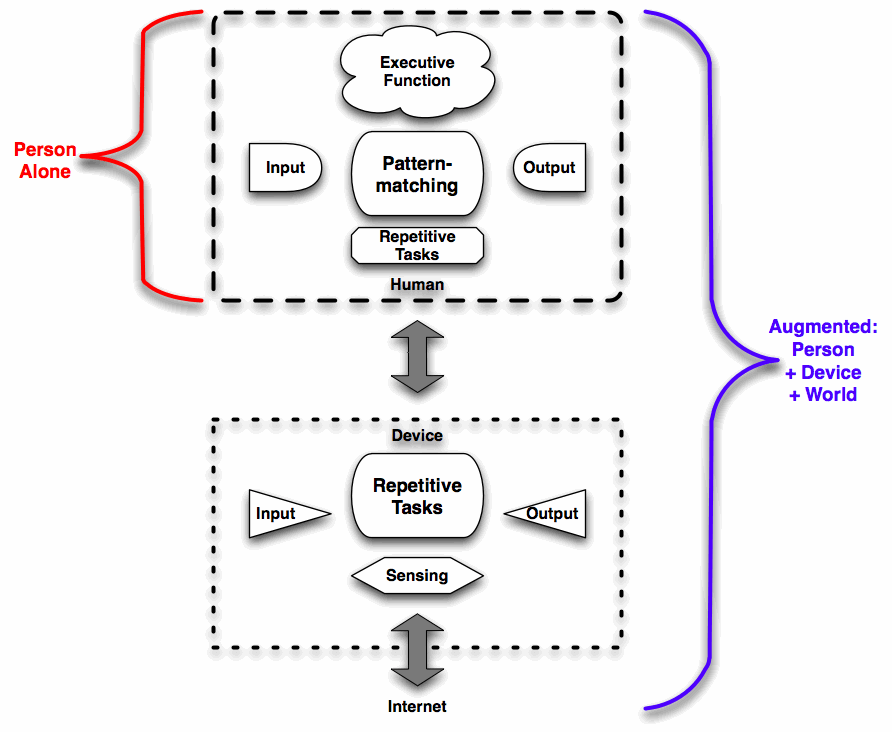My ITA colleague Jane Hart regularly collects the top 100 learning tools via contributions from lots of folks. It’s a fascinating list, worth looking at. I couldn’t use her submission sheet (some sort of system bug), so I thought I’d make an annotated post.
There are several categories of tools here. Harold Jarche talks about our personal knowledge management task, and in that, there are the tools I use to capture and share my own thinking (like this), and tools I use to go out and find or follow information.
In the capture and share category, major tools include:
- WordPress – I blog as a way to reflect and get feedback on my developing thoughts
- OmniGraffle – I diagram as another way to capture my thinking, trying to map conceptual relationships onto spatial ones
Then, of course, there are the more standard thought capture and share tools:
- Word – while I like Pages, it’s outlining just does not meet my needs, as I outline as part of my writing process
- Keynote – while I often have to transfer to PowerPoint, here the Apple product is superior
On the information finding/sharing path, some tools I use include:
- Google – like everyone else, I’m all over searching
- Twitter – this has been quite the revelation, seeing pointers and getting support, and of course #lrnchat
- Feedblitz – this is how I aggregate blogs I track and have them come via email (where I’ll see them)
- Skype – chats and calls and videochats with folks
Then I use several tools to keep track of information:
- Evernote – is a place to keep information across my devices (though I use Notes too, when I want it backed up and private)
- Google Docs – where I collaborate with colleagues on thoughts
The list changes; it’s different than what I put in the last two years, I’m sure, and may be more representative of today versus tomorrow or yesterday. And it doesn’t really include my mobile tools, where Google’s Maps app becomes quite the help, and Photos to share diagrams, and…. Also, email’s still big, and is not represented Still, it’s a reasonably representative list.
So, what am I missing?



 If we look at our human capabilities, we’re very good pattern matchers, but pretty bad at exercising rote performance. So we can identify problems, and strategize about solutions, but when it comes to executing rote tasks, like calculation, we’re slow and error prone. From the point of the view of a problem we’re trying to solve, we’re not as effective as we could be.
If we look at our human capabilities, we’re very good pattern matchers, but pretty bad at exercising rote performance. So we can identify problems, and strategize about solutions, but when it comes to executing rote tasks, like calculation, we’re slow and error prone. From the point of the view of a problem we’re trying to solve, we’re not as effective as we could be.